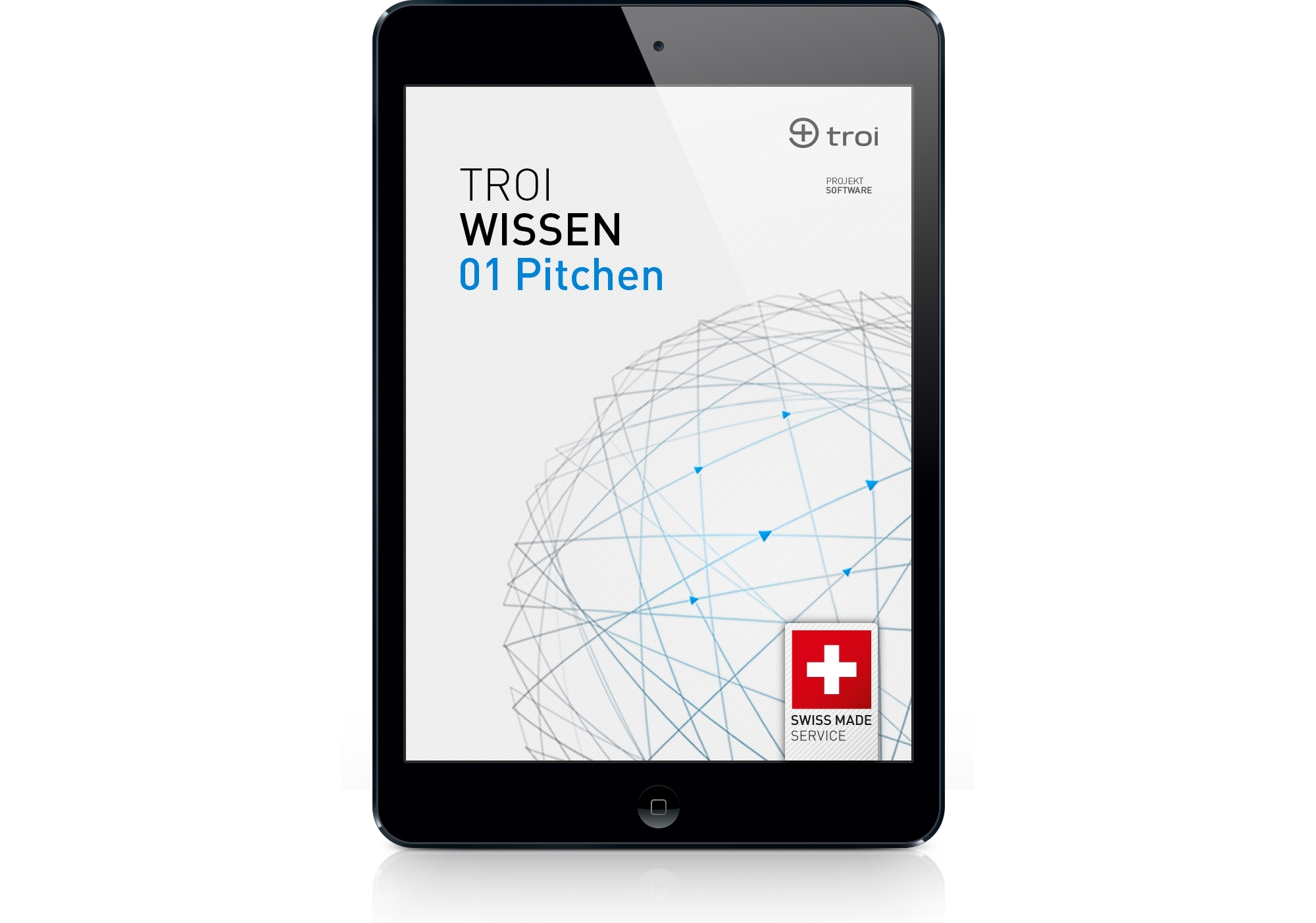7 practical tips for agency pitches
Despite numerous disadvantages for clients and agencies, PITCHEN is becoming increasingly popular. How do agencies know whether entering a pitch is worthwhile at all, and how do they preserve their room for maneuver? Troi, as a provider of agency software and consulting, has summarized the most important recommendations for agencies in its current practical guide. When the pitch becomes a beauty contestCorporations call [...]

When the pitch becomes a beauty contestCorporations like to call it 'competition-based pricing,' agencies like to call it a 'beauty contest.' One thing is certain: The agency pitch always causes red heads on both sides. René Eugster, Managing Director of Agentur am Flughafen (BSW) and interviewee in Troi's practical guide, considers "pitches for too small or incalculable budgets to be business nonsense. After all, it's not uncommon for the added value of projects put out to tender to be less than the financial risk agencies take by participating in pitches." In addition, decision-making channels are rarely clear and the success rate of 1:5 is much to the chagrin of all participating agencies. Nevertheless, many agencies go all out to win and outdo themselves with their use of resources in order to win the competition - the clients are happy.7 Signposts through the pitch landscapeWhat's the best way for agencies to pitch? Troi explores this question in its first practical guide. In his competence paper '01 Pitching', the provider of project software and agency consulting illustrates what room for maneuver agencies have during the pitch and how they can use it effectively. In doing so, Troi has incorporated both its own consulting experience and statements from interviews with industry representatives. "With the first competence paper, we support agencies in recognizing questionable pitch conditions at an early stage and thus avoiding blind flights. Of course, everything in order to improve the added value of agency projects in the long term," says Hansjörg Hinden, Head of Marketing & Communications at Troi. In doing so, the practical guide clarifies one thing above all: participation in a pitch wants to be well organized in order to provide sufficient creative output on the one hand and to avoid financial risks and resource bottlenecks in the paid day-to-day business on the other. The seven guides at a glance:Signpost No. 1: Develop an early warning systemDevelop an early warning system to distinguish serious from unserious pitches. The following criteria will give you valuable clues:' Number of participants: five at the most. By pre-screening, companies signal to you that they have already thought about potentially suitable partners'. Budget: If your counterpart is professional, he or she works transparently - also with regard to the financial framework. If not, it's worth asking whether the basis for a partnership really exists.' Briefing: Seriousness begins with a meaningful briefing. This usually consists of a task (precise and clear), the definition of a goal (concrete ideas about the result), as well as documents on the positioning and, if necessary, market research documents of the client'. Shoulder view: Professionals on the client side plan to look over their shoulders, taking the opportunity to visit participating agencies on site to get to know+ 3 the entire project team.' Alibipitch: Ask questions and listen carefully to the answers so you can hear where the action is. In the end, is it a competition where it has already been determined who will win the contract?' Decision-Maker Presentation: Make sure that all decision-makers are at the table for the presentation - because your ideas lose their shine if they have to be passed on internally to the top decision-makers via third parties first'. Copyright: Under no circumstances should you assign your rights to ideas to the potential client. In the event of a dispute, you will have a bad hand: the agency has the burden of proof.Signpost No. 2: keep a pitch controllingCreate a pitch history - and learn from it. After the pitch is before the pitch. By controlling previous pitches, you gain valuable information for resource planning and cost calculation of subsequent pitches. Experience shows that small and medium-sized agencies in particular neglect the day-to-day business, which is vital for survival, due to their busy efforts during pitches With conscientious controlling, you find out what you need to earn - for example, to make up for initially loss-making projects.Signpost No. 3: Smart 'FreelancersRemunerate external specialists based on results. Old hands at agencies let freelancers participate in pitch success: "The basic fee is usually lower than the normal compensation, but freelancers receive significantly more if they are successful. This way, I have the costs under control and we win or lose together. It's good for teamwork," says one insider. A pool of experienced freelancers reduces the risk of the pitch getting bogged down. With suitable project software, the pool and all its resources can be optimally managed.Signpost No. 4: the right pitch feeAvoid unpaid pitches. The expenditure of time, money and ideas is in no economic relation to the result. In addition, the question arises as to whether there is serious interest in a cooperative partnership or whether the focus of the supposed client is only on solutions that can be procured quickly and free of charge.Signpost #5: Lead the pitch processAlways present yourself actively and purposefully to the potential client. Even in a pitch, the chemistry between agency and client remains a decisive criterion. From the first contact to the shoulder glance to the final presentation, you should therefore use every opportunity to leave a personal mark. Make your potential clients feel that you really want the job - burn for it! And most importantly: no pitch without a personal presentation.Signpost No. 6: the right buyer strategyPurchasing is becoming increasingly important in the pitch process. Therefore, give the buyer the necessary attention and proceed according to the 'know your counterpart' principle right from the start. Transparency is a good strategy on the road to cooperation: buyers want to know what the individual costs for an agency employee consist of. Give the buyer as much insight into your personnel and material cost 'overheads' as necessary to be transparent - but as little as possible to remain self-sufficient as an agency and to be able to control creative processes self-determined at any time.Signpost #7: Try to avoid pitchesConvince the client by showing them the downside of pitches. This serves both sides, because a pitch is rarely the optimal solution for clients and agencies. Or get involved before the pitch. A good option is so-called agency screenings: During a workshop, both sides can get to know each other on a personal level and thus greatly reduce the economic and time expenditure.Dave Mürner of Himmelblau AG ASW puts it in a nutshell: "We create most of our room for maneuver through classic acquisition. Here we determine which brands and which projects we want to tackle. The dialog with the customer is on a completely different level right from the start and the added value is significantly better compared to pitch projects. That's why I do everything I can in each case to avoid pitches." For all other agencies, it is to be hoped that they will recognize the newly discovered scope for action in the pitch and actively demand it. So that the end of the pitch also becomes the beginning of a successful project. For more information on pitching, see Troi's competency paper at. http://www.troi.ch/pitchen








